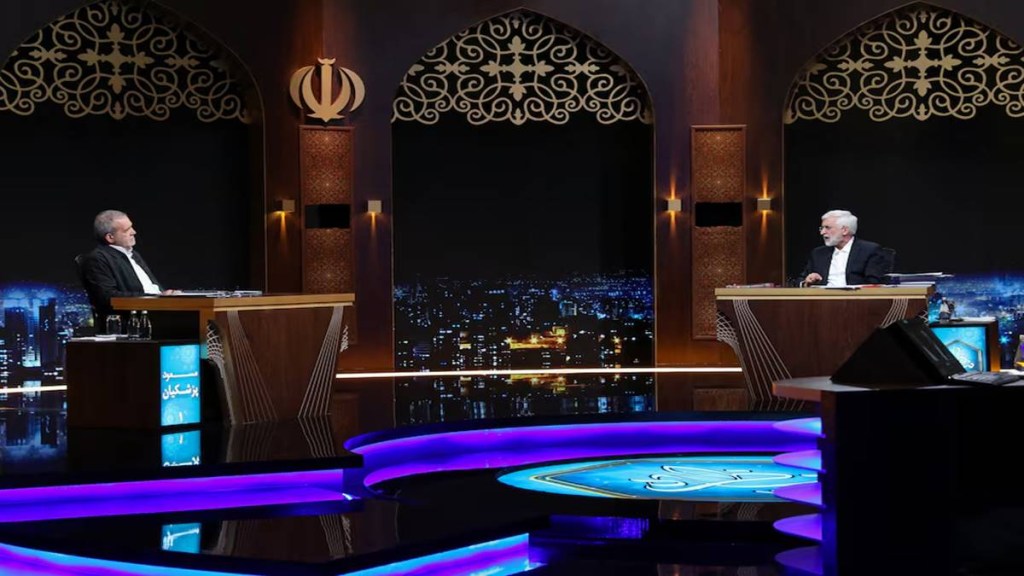As Iran prepares for a decisive run-off presidential election today (Friday July 5, 2024), the political landscape is marked by the stark contrast between the two remaining candidates: Saeed Jalili and Masoud Pezeshkian.
The election, necessitated by the inability of any candidate to secure over 50% of the vote in the first round, has intensified the political discourse within the country. The outcome will determine the new president of Iran following the tragic death of President Ebrahim Raisi in a helicopter crash on May 19.
The Candidates: Saeed Jalili and Masoud Pezeshkian
Saeed Jalili is a conservative hardliner. He is best known for his tenure as Iran’s chief nuclear negotiator from 2007 to 2012. His uncompromising stance on Iran’s nuclear programme has defined his political career.
As of now, he serves as a direct representative of Supreme Leader Ali Khamenei on the Supreme National Security Committee (SNSC). Despite two previous unsuccessful presidential bids, Jalili remains a significant figure within Iran’s political establishment, particularly among conservatives.
Masoud Pezeshkian, a seasoned politician and heart surgeon, has been a member of the Iranian parliament since 2008. He served as the deputy parliament speaker from 2016 to 2020 and has held various government positions primarily within the health sector. Pezeshkian, who was disqualified from running in the 2021 presidential election by the Guardian Council, is now seen as a moderate candidate with endorsements from key centrists and reformists, including former Presidents Mohammad Khatami and Hassan Rouhani.
Political Camps and Support Bases
Jalili’s campaign is deeply rooted in conservative ideology. Known for his anti-Western rhetoric, Jalili opposed the 2015 nuclear deal with the West and has vowed to resist any Western conditions for its restoration. His tenure on the SNSC allowed him to exert significant influence, operating what he referred to as a “shadow government” during President Hassan Rouhani’s administration. Jalili’s promises to reduce inflation lack specific details, but his hardline stance appeals to Iran’s conservative base.
In contrast, Pezeshkian represents a more moderate perspective. He advocates for the restoration of the 2015 nuclear deal and has openly criticized the government’s handling of protests, including those sparked by the death of Mahsa Amini in police custody in 2022. His moderate stance and commitment to reform have garnered support from senior reformist figures. However, Pezeshkian’s alignment with the political establishment, despite his reformist inclinations, may alienate some potential voters.
Iran’s Political Establishment
Both candidates, despite their ideological differences, are entrenched within Iran’s political establishment. The conservative camp, which has dominated recent years, largely supports Jalili. His ties to the Islamic Revolutionary Guard Corps (IRGC) and his past membership in the organization bolster his standing among hardliners. Pezeshkian, while supportive of the IRGC and critical of certain government actions, has not endorsed anti-government protests, underscoring his loyalty to the political system.
First Round Results and Implications
The first round of voting placed Pezeshkian ahead with 44.4% of the vote, followed by Jalili with 40%. The conservative former mayor of Tehran, Mohammad Bagher Ghalibaf, secured 14.4%. The turnout was historically low, with only 40% of the 61 million eligible voters participating. This low turnout reflects widespread disillusionment with the political process, particularly among reformist supporters.
Prospects for the Run-off
Pezeshkian’s lead in the first round does not guarantee victory in the run-off. Ghalibaf and two other conservative candidates have endorsed Jalili, potentially consolidating the conservative vote. Pezeshkian’s success hinges on his ability to mobilize a higher turnout among centrists and reformists. However, the crackdown on anti-government protests and Pezeshkian’s perceived establishment ties may deter these voters from participating.
The run-off election presents a crucial test for Iran’s political future. The choice between Jalili’s hardline conservatism and Pezeshkian’s moderate reformism will shape the country’s domestic and international policies. Pezeshkian’s ability to appeal to disillusioned reformist voters and Jalili’s capacity to unify the conservative base will ultimately determine the outcome of this pivotal election.

